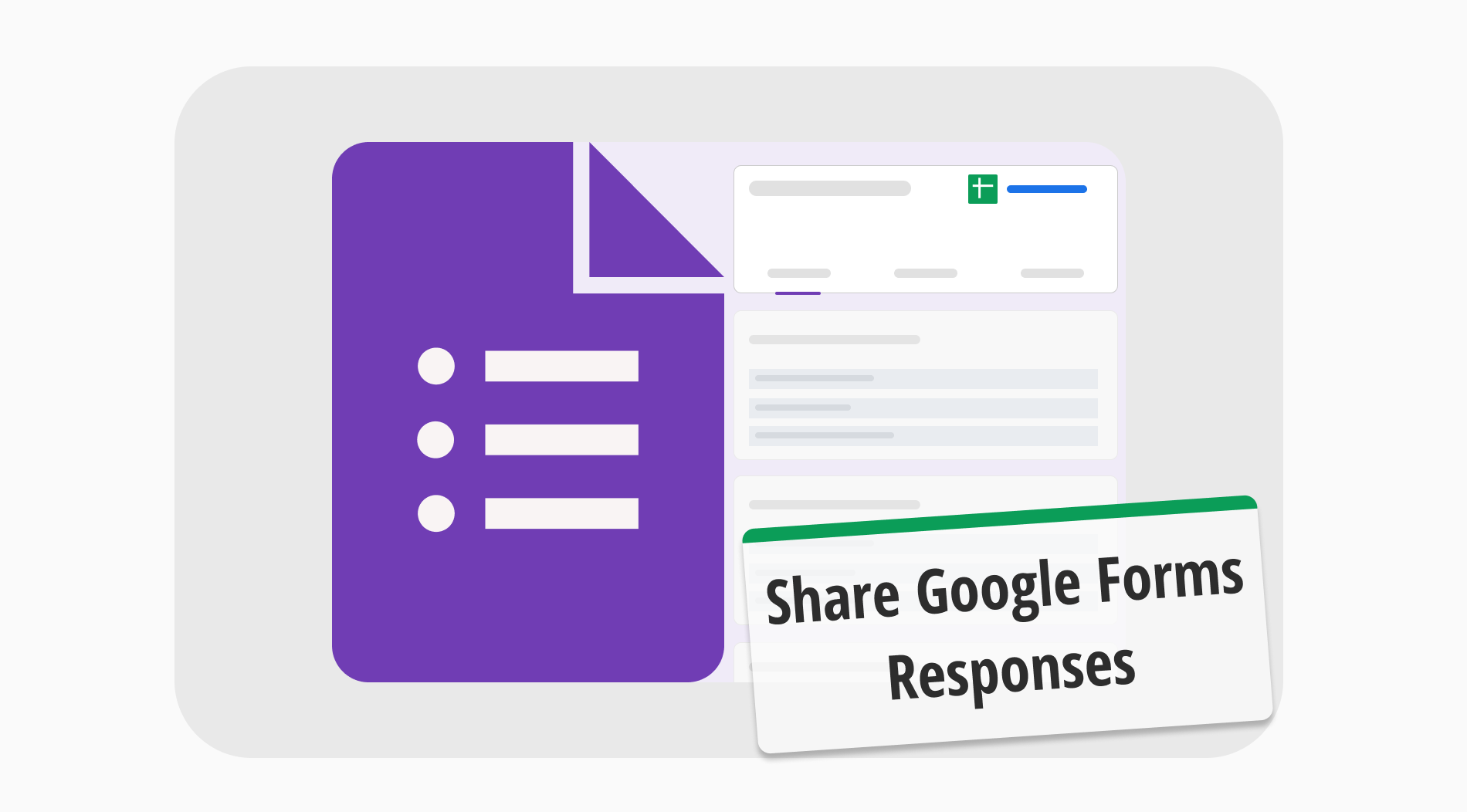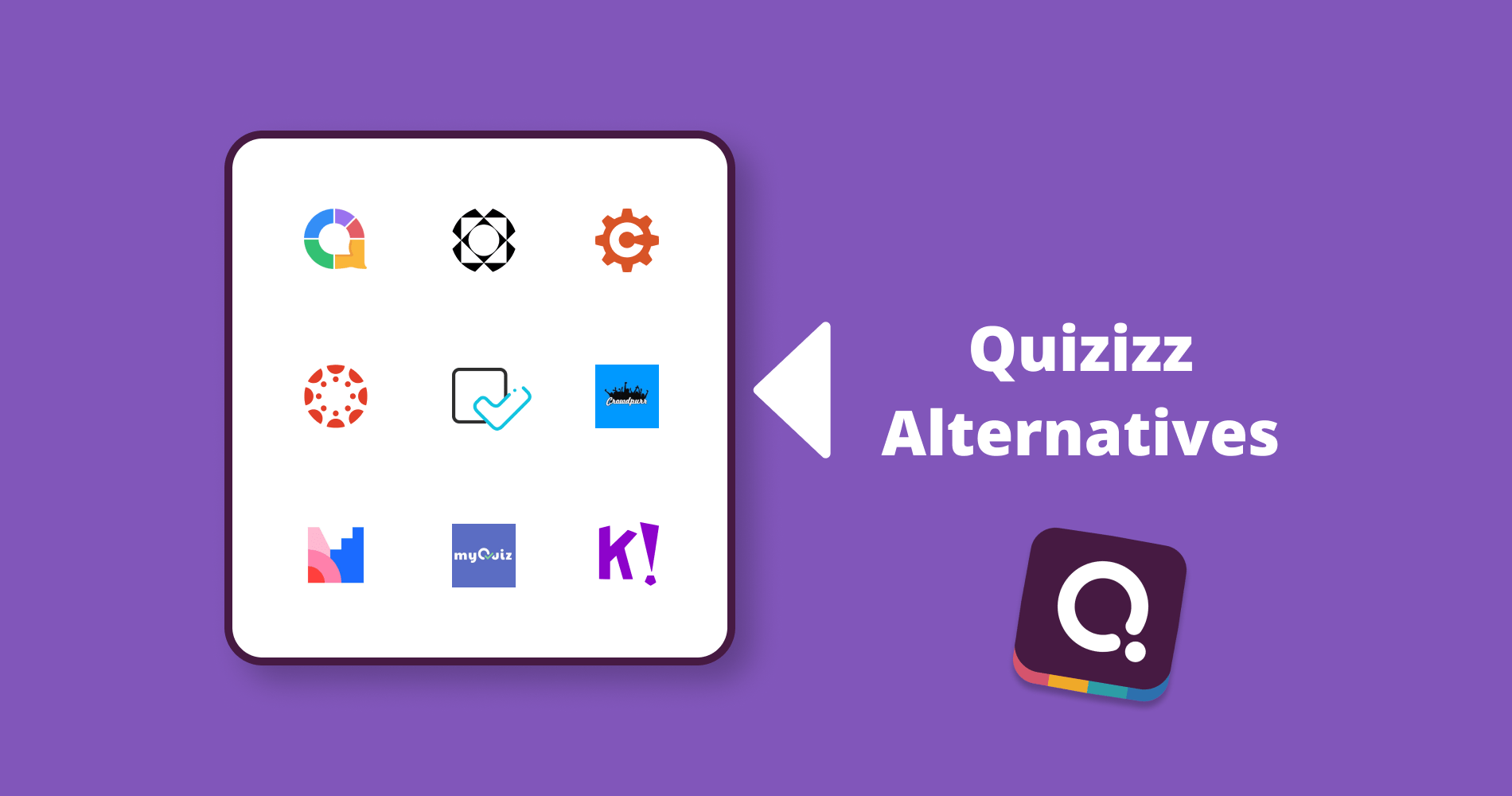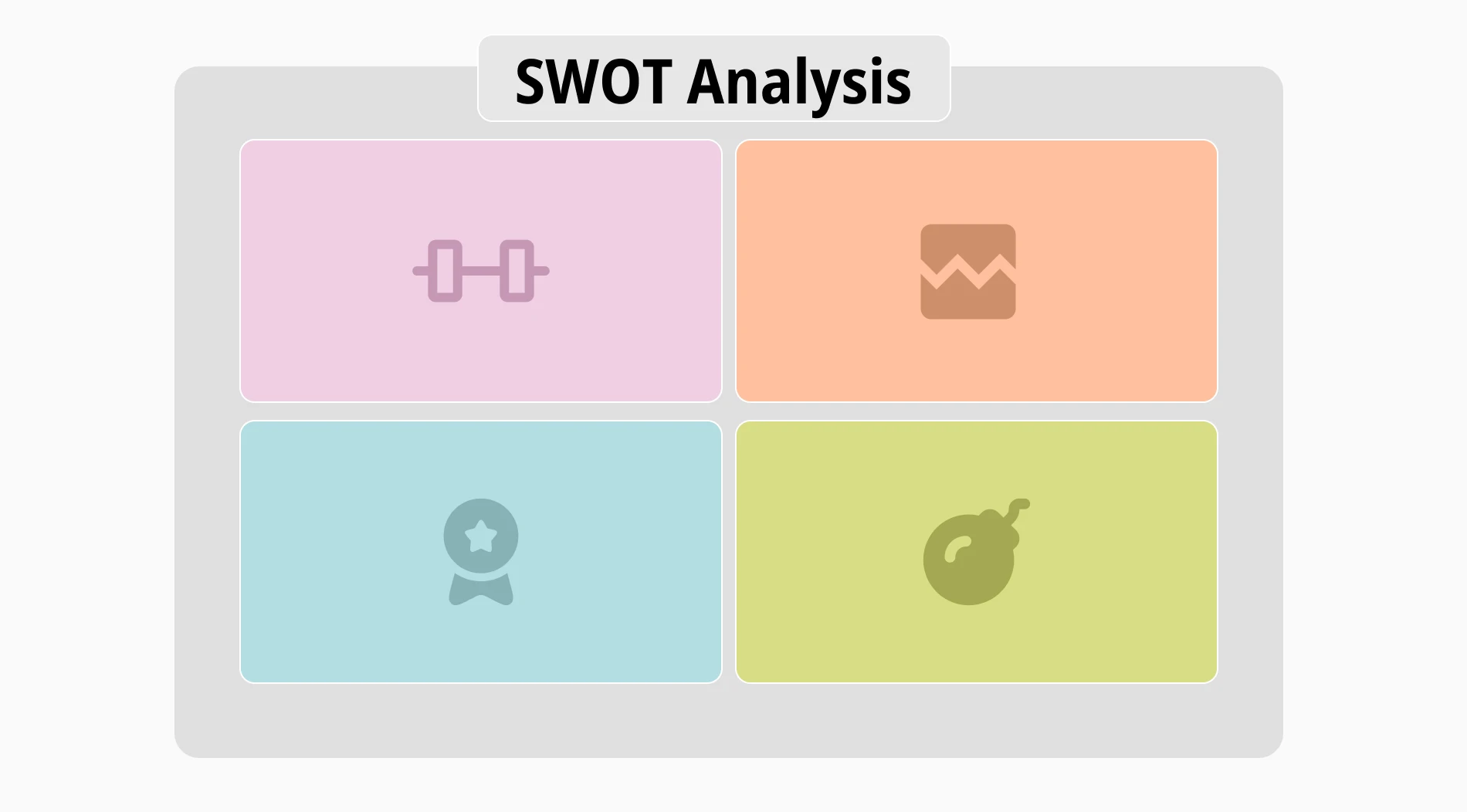
Businesses always look for ways to improve their business strategy, resources, and productivity to gain competitive advantage in the market. A SWOT analysis steps in exactly at this stage for companies to evaluate the quality and efficiency of their existing or potential product or service, and invest in an action plan to take a step further.
In this article, we look into the SWOT Analysis. You will be able to understand when to use it, how to use it, the significance of this type of analysis, what sort of templates you can apply to your product, and some of the advantages and disadvantages of performing a SWOT analysis. Let’s dive in!
What is the SWOT analysis?
The SWOT Analysis is a framework that is used to evaluate the internal and external factors that are impacting your business internal factors consist of Strengths and Weaknesses, while the external factors focus on Opportunities and Threats - which is what SWOT stands for. This type of evaluation helps you make an effective business planning.
When to use the SWOT analysis
You can use the SWOT analysis whenever you need clarity on your business - especially when planning to make a change. These changes may include internal or external changes, strategic planning, or when you want to make sure that everything is going smoothly in your business on a regular basis. You can use the SWOT analysis when:
⏰Implementing a large change
⏰Reviewing your business performance
⏰Exploring new initiatives
⏰Planning to enter new markets
⏰Developing marketing strategies
⏰Creating sales tactics
⏰Adapting to new industry changes
⏰Identifying new career opportunities and threats
Importance of the SWOT analysis
A SWOT analysis gives you clarity on your business from different aspects, even the ones that might be overlooked at times. This technique helps you identify the strengths, weaknesses, opportunities, and threats of your organization. It works as an aid to guide you to build on the points that your business is lacking and strengthen the other aspects that need a little push to have a competitive position in the market.
The SWOT analysis template: Explained
A SWOT analysis typically includes a template, which is an efficient way to kick-start to visualize the four key elements of your business. The SWOT framework you have, particularly for your product, will visually uncover the positive and negative aspects of your organization, whether you are a big or small business. Below, you can see an example of a typical SWOT template.
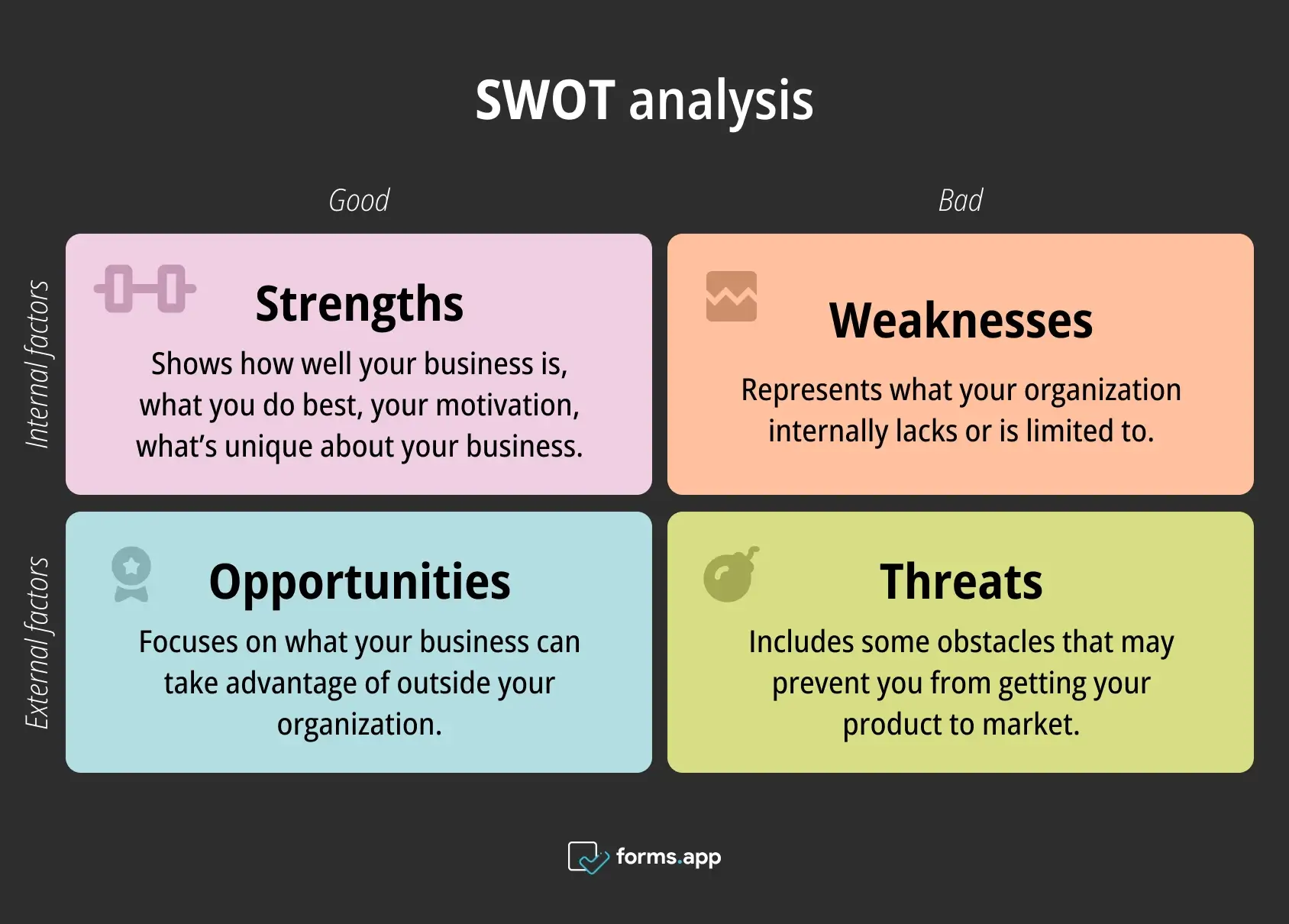
SWOT analysis template
A SWOT analysis template can vary in different industries depending on its function, needs, targeted audience, budget, values, and many other aspects. Let’s have a look at these key components to identify what your SWOT analysis should include fundamentally:
1. Internal factors
When you look at your organisation, what you see as good and bad is something that is internal, which means they are in your control and can change with a good strategic business plan. These aspects include Strengths and Weaknesses, which represent what your business is good at and what it can be better at. You can always adjust these components when you think your organisation needs.
A. Strengths
Previously, we had a look at SWOT’s meaning, and the first key component that comes along is strengths. Strengths show how well your business is, what you do best, your motivation, what’s unique about your business, etc. in contrast to your competitors in the market. The strengths are the integral part of your organisation and what make your business shine.
B. Weaknesses
Compared to strengths, weaknesses represent what your organization internally lacks or is limited to. In this case, you should focus on what you could improve to break the limits, which may include your financial resources, customer loyalty, or maybe the quality of your product. These are the elements you should fix, improve, or change.
2. External factors
While you can control the internal factors of your business, external factors, on the other hand, are out of your control, and yet you could adapt to them. These factors are Opportunities and Threats, which may include the newest trends, technological advancements, economic changes, the environment, and so on. They may not be controllable, but you can enhance the internal aspects accordingly to adapt to these changes and improve your business.
C. Opportunities
As a positive external factor, Opportunities focus on what your business can take advantage of outside your organization, and they can be game-changers. You should try to keep an eye on aspects such as industry trends, technology, and consumer behavior and use your strengths to make these opportunities beneficial to your business. Identified opportunities will help you take the lead in the competitive market.
D. Threats
Threats can include some obstacles that may prevent you from getting your product to market. These are unfavorable situations that can be challenging to face. In this case, you should focus on what could cause harm to your company, whether there is a new competition or a policy change. Think about what makes you vulnerable and strong in this situation, and take action to overcome any potential risks.
How to use the SWOT analysis for your business
To make sure to ask the right SWOT analysis questions, you might want to evaluate the target points and your objectives. It is best to get together with your teammates and brainstorm key elements you will add to each component of the SWOT matrix - which can also be named the confrontation matrix.
This will avoid any subjective point of view and will give you clear, more insightful observations. So, what should you consider when conducting your SWOT analysis? Let’s have a look:
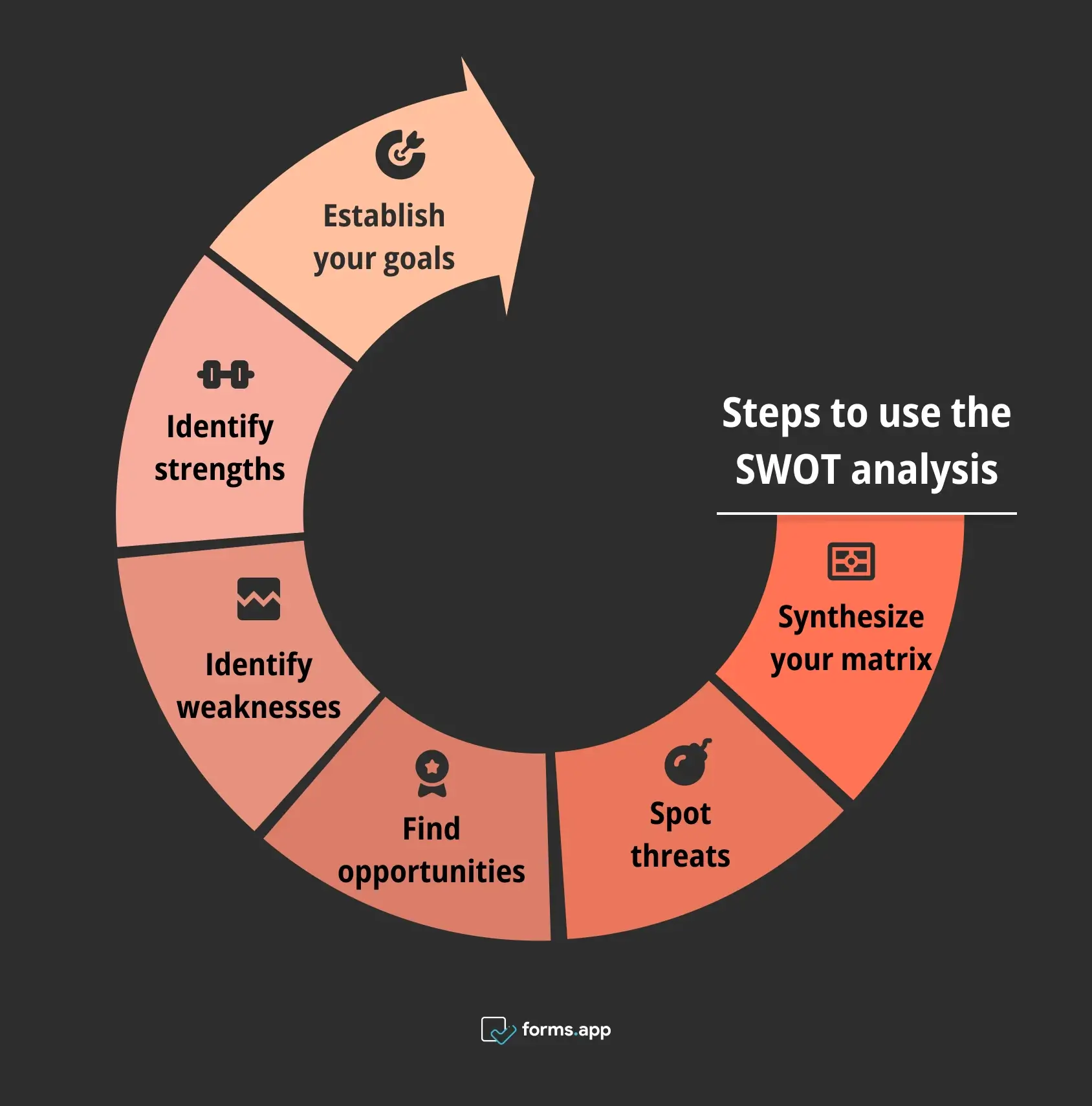
6 steps to use the SWOT analysis
1. Establish your goals
It is of high importance to know what your next business goal is. Having a goal will aid you to choose the most relevant points for your analysis. Assemble your team members and think about the current state of your business and discuss what it needs.
For example, do you need to expand your business? Are the new products or services feasible? Do you have sufficient resources for the new and/or existing products? What are the risks and benefits of adapting the human resources procedure? Once you have evaluated the needs, you can start making a list of goals to meet these needs.
2. Identify strengths
When you come together with your team, discuss what your business is good at and what makes you successful and special. You may consider your brand reputation, skills, offerings, your asset or the feedback you receive from your customers. It is important to be as specific as possible in order to conduct an efficient analysis. Remember that strengths are internal factors, which means you have control over them.
You can also compare your business to others in the market by simply using a traffic analytics tool. This will show you your traffic stats, audience demographics, and many other aspects and details related to the business activity, which will allow you to measure up to competitors in the market.
3. Identify weaknesses
To be able to improve your weaknesses and turn them into strengths, first, you need to analyze your weaknesses with scrutiny. When evaluating the weaknesses, it is to your benefit to be as honest as possible in order to find the best solution. After all, just like your strengths, weaknesses are also internal factors.
When thinking about weaknesses of your business, you should ask where you most struggle with. Detect the lack of resources and consider the negative feedback you have received from customers. You might also have lack of financial resource resulting from high operating expenses. Once you have spotted these weaknesses, you can start making improvements.
4. Find opportunities
Remember that SWOT stands for Strengths, Weaknesses, Opportunities, and Threats. The latter two are your external factors, which means you need to make sure to spot any opportunity that might come up outside your business. They can be related to the latest trends, locations with less competition, ideal customers you can connect to on a social media platform, and many more.
You use opportunities to your advantage as a business operator. For online business, you can find opportunities using the Keyword Gap tool by simply finding keywords that the competitors are ranking for. This will help you identify yours and bring in more traffic. The key is to always take the opportunity to build on strengths.
5. Spot threats
Have a look at the obstacles that are preventing your business from success. Threats are risks to your business and they should always be at minimum level, if not null. Be aware of what other competitors are doing that you aren’t, or everything from technological disruption to regulatory changes, to economic conditions.
You can also rank threats according to their impact on your business before taking any action. If you want to use a tool to explore the latest market trends and get market insights from emerging competitors, you can use a market explorer tool to get an idea. This can lead you to turn these threats into opportunities.
6. Synthetise your matrix
By this stage, you would have created your SWOT elements and gathered enough materials to create a good matrix and eventually, a good strategy. It is always better to narrow down your list to keep the actions more realistic, also to avoid feeling overwhelmed. At this stage, focus on the most significant points.
To create an organised matrix, you can draw a four-quadrant diagram as an impact matrix. You should have one vertical axis for the impact of an item on your business, and one horizontal axis for the effort required to implement that item. You can then add the elements you have gathered from your analysis to create a visual picture. Then, place each SWOT component into its quadrant based on effort and impact.
Examples of the SWOT analysis
Some examples we will give you may create a better picture of what a SWOT analysis looks like. These examples can be adjusted, recreated, and adapted to the specific needs of your business. Let’s have a look.
Example #1
Imagine you have a local ceramics workshop. As a small enterprise, your SWOT components may differ depending on a number of circumstances. For the analysis, it would be best to consider both local and mass businesses to take advantage of both aspects. Let’s take a look at the components of this example:
- As strengths, you can have high-quality products, expert artisans, and personalized service.
- As for your weaknesses, you may have limited production capacity, high costs, and a limited number of customers.
- As opportunities, you can have private and group classes, partnerships with other local enterprises, and growing interest in uniquely crafted goods.
- As for the threats, you may have competition from bigger producers, seasonal demand fluctuations, and economic downturns.
Considering the strong foundation of the business in terms of strengths, it would be beneficial to explore opportunities to expand the business by starting online sales, and offering classes. Addressing the weaknesses whilst navigating the threats can lead to sustainable growth. Adapting to the latest market trends and leveraging the selling points can enhance its competitive position in the market.
Example #2
Now, let’s say you own an estate agency specializing in residential and commercial property sales and rentals in a metropole. As an estate agent in a large city, you would need to have strong knowledge of the regional areas and their market prices as well as a good reputation amongst your competitors. Let’s see the components of this profile:
- As for the strengths, you can have strong market knowledge, an experienced team, a portfolio with diverse properties, and an excellent customer relationship
- For the weaknesses, you might have high costs, limited brand recognition, and dependence on the local market
- As for the opportunities, there can be a market expansion, partnership collaboration, and a growing demand for eco-friendly properties
- For the threats, you may have increased competition, fluctuations in the property market, and economic instability
The listed strengths for this profile can help the estate agent have a good position in the local market. However, it would only be wise to capitalise on opportunities and mitigate threats by expanding the market presence and exploring the potential partnerships. Addressing weaknesses would also be crucial for long term success and competitiveness in such a dynamic market.
Pros & cons of the SWOT analysis
The pros and cons list can help you understand the advantages and drawbacks of your organization. It is important to bear in mind when creating a firm strategy to upgrade your business. Let’s take a look at some pros and cons of the SWOT analysis:
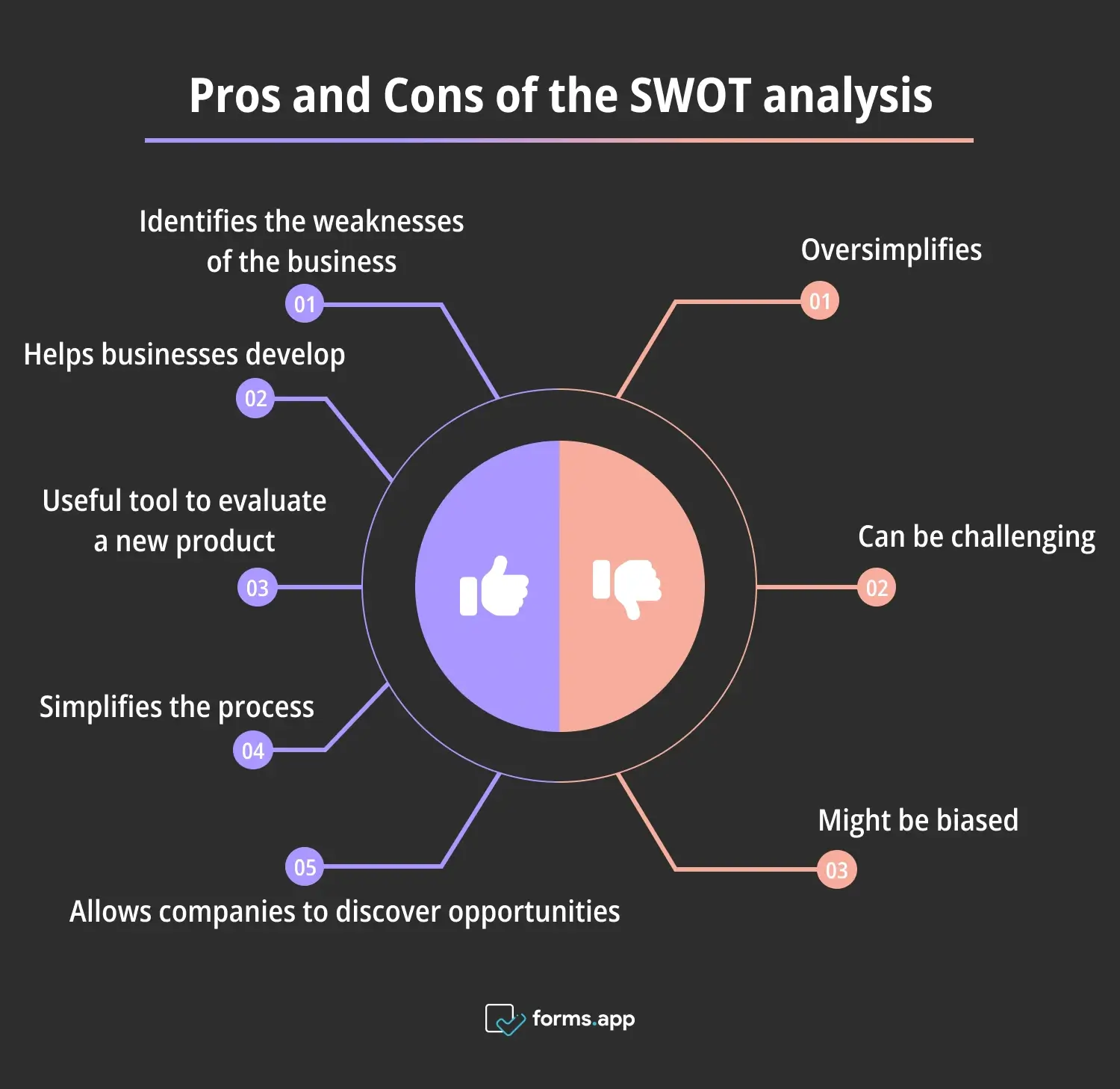
Advantages and disadvantages of the SWOT analysis
Pros:
- It identifies the weaknesses of the business to implement a strategical approach to develop.
- It helps businesses develop more effective plans by looking at strengths and weaknesses
- It is a useful tool to evaluate a new product and potential customers
- It simplifies the process of business analysis
- It allows companies to discover opportunities
Cons:
- It oversimplifies the complex situations in the analysis process
- It can be challenging to determine the importance of each factor compared to a different list
- It might be biased depending on the analyst’s perspective
SWOT analysis vs TOWS analysis
Even if TOWS looks like SWOT written backward - which it is - there is a slight difference in their function. When SWOT is a useful tool for examining Strengths, Weaknesses, Opportunities and Threats your business faces, TOWS analysis is an additional tool to help you design your action points using the analysis of these components.
Let’s think of a tech startup example. The SWOT analysis of this company would examine strengths such as an innovative product, weaknesses would include limited market presence, opportunities would be growing demand for tech solutions, and threats would be intense competition.
In this case, the TOWS analysis would go one step further by creating a strategic action plan for these insights. For instance, TOWS would combine the strength of having an innovative product with the opportunity of growing demand for solutions, and suggest that the company should market its product to gain advantage from this demand. From the look of it, when SWOT is more descriptive, TOWS demonstrates a more actionable approach with strategic solutions.
SWOT analysis vs SOAR analysis
Now we know that SWOT analysis focuses on both positive and negative aspects of an organization. Comparatively, the SOAR analysis, which stands for Strengths, Opportunities, Aspirations, and Results, has more of a positive approach. It solely focuses on the positive aspects of a business and looks for ways to leverage to seize opportunities. By this way, businesses can only focus on building up their strengths and not worry about fixing or bettering their weaknesses.
Final words
SWOT analysis is an effective tool for identifying the internal and external factors with the key components relevant to your business, including strengths, weaknesses, opportunities, and threats. Given the examples for different SWOT analyses above, we demonstrated ways to craft and adapt this framework to your organisation.
This article uncovered the SWOT analysis, providing insights by highlighting strengths, weaknesses, opportunities, and threats with examples. It also explains when and how to use this tool for your business, provides examples to help you create your own analysis with relevance, and outlines its key differences from similar types of analyses in business and marketing. This popular framework will help you elevate your business by bringing out its potential.
Elif enjoys sharing her expertise through helpful guidelines and tips about marketing and business planning. She is also a linguist who has a deep interest in maps, history, culture, and languages.
Índice de Conteúdos
- What is the SWOT analysis?
- When to use the SWOT analysis
- Importance of the SWOT analysis
- The SWOT analysis template: Explained
- How to use the SWOT analysis for your business
- Examples of the SWOT analysis
- Pros & cons of the SWOT analysis
- SWOT analysis vs TOWS analysis
- SWOT analysis vs SOAR analysis
- Final words



 11 min ler
11 min ler